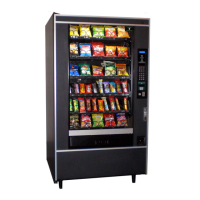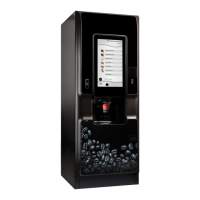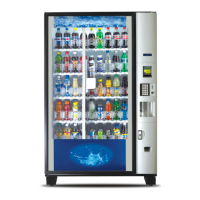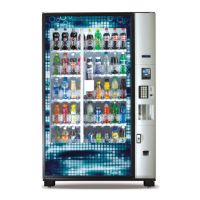Snack - Based Troubleshooting and Repair Guide
1670065 Page 10 of 54 September, 2002
passed through regulator circuit REG1, where it is regulated for use by the driver cir-
cuits.
h. J62 Coffee Controller Power Connector. Not used in this machine.
i. J63 Can Module Connector. Not used in this machine.
B. Interlock Switch
1. The interlock switch is a single pole single throw switch designed to provide information
to the controller regarding the position of the main door. The interlock also will effect the
operation of the service keypad. In the door opened position, programming functions are
operational but are suspended with the switch in the door closed position.
C. Keypads
1. The selection keypad is a universal keypad used on all present production snack merchan-
disers and is designed to allow control of the selection functions as well as certain data
retrieval operations.
2. The service keypad, on NV models, is designed to allow control of all programming func-
tions.
3. Both keypads operate on a matrix concept (see Selection Matrix on page 11).
NOTE:
Early NV models are equipped with a 4 arrow keypad
as opposed to a two arrow keypad.
D. Display System
1. The universal display board is powered by an on-board DC-DC\DC-AC converter that
supplies low voltage AC (approximately 5V P-P) to heat the florescent tube filament. It
also provides the high (approximately 29vdc) grid voltage to attract electrons to the appro-
priate segments. A matrix system is used by the display to determine what will light up
and when. The fluorescent display contains 10 digits, each with 15 segments.
2. All 15-segment anodes in each digit are wired in parallel across the entire display. For
example, the upper left segment in the first digit is also connected to the upper left seg-
ment in digits 2 through 10, and so on for all 15 segments. Segments are selected by
applying a high to the appropriate segment anodes. Each digit has a mesh grid placed
between the segment anodes and the cathode. The digits are turned on and off by the grid
drivers which put either a high or low voltage on each grid. When the grid is low, the digit
is off; when the grid is high, the digit lights.

